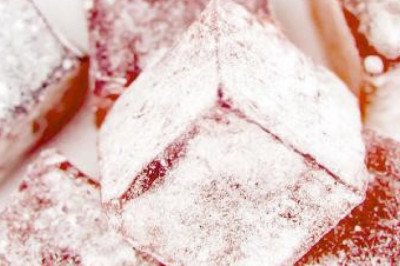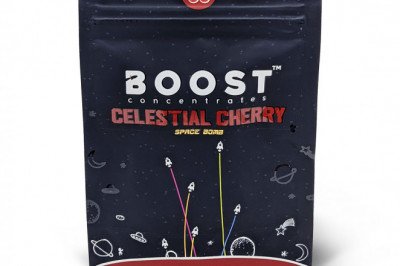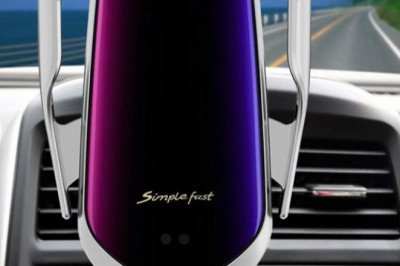views
Vacuum Grease Market is forecast to reach US$185.3 million by 2027, after growing at a CAGR of 8.5% during 2022-2027. Rising individual preferences for a wide range of vacuum grease products such as fluorocarbon, hydrocarbon, and silicone, in the food and beverage industry as well as in the automotive industry is expected to drive the growth of the global vacuum grease market over the forecast period. Increased food processing industries require advanced packaging and components storage, including vacuum grease in various countries. The demand for vacuum grease to provide lubrication in high temperature and pressure situations is growing due to the rising usage of high precision machinery working in vacuum environments. Its traction is also inclining as a result of its widespread recognition as a safe sealant in industries such as pharmaceuticals, food processing, automotive, and aerospace.
Impact of Covid-19
In recent times, vacuum grease production was severely affected due to temporarily shutdown of industries and production facility because of COVID-19 pandemic. As COVID-19 crisis continues, vacuum grease market as there has been decline in the industrial activity due to temporarily closure of industries and impact on supply and demand chain across various verticals. In 2020, companies saw continued supply disruption, cost escalation, and product delivery delays due to the pandemic. Also, the sector was likely hampered by global demand. Furthermore, the automotive and aerospace industry is a key consumer of vacuum grease. However, as a result of a nationwide lockdown across the globe, the automotive and aerospace transport industry declined its production. As a result, the demand for vacuum grease experienced a sudden decline which affected the market growth.
Report Coverage
The report "Vacuum Grease Market – Forecast (2022-2027)", by IndustryARC, covers an in-depth analysis of the following segments of the vacuum grease market.
Key Takeaways
- Europe dominated the vacuum grease market due to the rapidly rising demand for vacuum grease owing to its wide acceptance as a safe sealant between industries such as food processing, automotive and aerospace.
- The increasing number of food processing industries and the growing need for high-quality packaging for sealing and increasing mechanical applications for vacuum and pressure systems are driving the market growth.
- Innovative product development and government support for research and development activities are expected to create potential opportunities for the growth of the market over the forecast period. For instance, in February 2020 GP Global, a lubricants company based in the United Arab Emirates, planned to invest US$ 14 million in a greenfield lubricant blending factory in western India, which will produce grease, lubricants, and white oil.
- Rapidly rising use of high-precision machines operating under vacuum conditions has led to the increasing demand for vacuum grease to provide lubrication in high temperature and pressure environments.
Vacuum Grease Market Segment Analysis – By Type
Fluorocarbon-based vacuum grease segment has dominated the market for vacuum grease market in 2021. Chemically inert fluorocarbon-based vacuum greases provide improved lubrication in vacuum systems. Fluorinated oil, which is manufactured from perfluoroalkyl polyether and fluorocarbon thickener, is the basis oil for fluorocarbon-based vacuum greases. Vacuum greases based on fluorocarbons do not ignite, explode, or degrade, and they do not react to produce solid deposits. They are resistant to oxidation and maintain their lubricating function at severe temperatures ranging from –15 to –300 °C. Pressure relief valve lubrication, oven conveyor chain and bearing grease, high-temperature bearing, valve, and O-ring lubrication, or any function that needs high-temperature stability, low vapor pressure, or chemical inertness are all uses for fluorocarbon-based vacuum greases. Due to considerable expenditures in the laboratory equipment industry in various regions, the fluorocarbon-based vacuum greases segment is expected to account for a significant proportion of the vacuum grease market by the end of the forecast period.
Vacuum Grease Market Segment Analysis – Application
Laboratory & Industrial equipment sector has dominated the market for vacuum grease market in 2021 and is growing at a CAGR of 10.8% during the forecast period. The lubricant vacuum grease has a low volatility. Alcohol, esters, alkalis, and water are all resistant to it. It also protects components and equipment from corrosion and fusing, resulting in less wear. In the domains of biotech, clinical, diagnostic, research, and forensic labs, it is predicted to rise. Vacuum grease is primarily employed as a sealer in this case. It also protects equipment and systems from pollution and is also suitable with metals, plastics, and rubbers and may be used in both high-pressure and low-pressure conditions. Thus, owing to such factors vacuum grease is increasingly preferred in the laboratory & industrial equipment applications.
Vacuum Grease Market Segment Analysis – Geography
Europe dominated the vacuum grease market in 2021 with more than 45%. The highly developed food processing industries in UK, Germany, and France coupled with continuous investment in the region to advance the automotive and aerospace industries has raised the market growth over the years. In addition, increasing demand for laboratory & industrial equipment in hospitals, educational institutions, and industries, has driven the growth of the vacuum grease industry in European region. In the automotive industry, hydrocarbon-based greases are mainly used in frictional mechanisms to reduce friction, and silicone-based vacuum greases are used to stabilize higher temperatures. Thus, the rising growth of automotive in European region is anticipated to drive the market growth. For instance, according to the Organization Internationale des Constructeurs d'Automobiles in Austria the production of motor vehicles increased by 9.6% from 2018 to 2019. Hence, the continuous growth in the end-use sectors is expected to drive the vacuum grease market in the European region over the coming years.
Vacuum Grease Market Drivers
Increasing Demand for Vacuum Grease in Food Processing Industry
Vacuum grease is used for a wide range of applications in the food and beverage sector. They are mainly used for sealing purposes in food processing industries. Vacuum greases for food grade applications offer high water resistance, oxidation stability, low wear rates, compatibility with construction materials, good adsorption and adhesion to metals and plastics, and resistance to steam (when filling wine, beer or soft drinks). Increasing government initiatives to boost the food processing industry is estimated to drive the demand for vacuum grease in the upcoming years. For instance, according to Invest India the Government of India is taking all necessary initiatives to increase investments in the food processing industry in India through the Ministry of Food Processing Industries (MoFPI). The government has approved 41 food parks as part of the Mega Food Parks Scheme, of which 38 have received final clearance and 22 were set to open on August 1, 2021. Increasing the number of food processing industries, increasing demand for airtight packaging and technological advances in industrial equipment in developed regions are driving demand from food processing industries, which, in turn, is expected to drive the market for vacuum grease over the coming years.
Rapidly Rising Usage of High Vacuum Grease
High vacuum grease is the most common product used in most vacuum heat treatment shops. It is a silicone-based product that is generally considered to be ideal for most high vacuum applications. The grease is uniform in consistency, firm but not rigid and can be applied over a wide range of temperatures (exposures). Important features of this high vacuum grease include its sealing capability, water resistance, chemicals, and temperature range (low and high) and low volatility. This grease can be used in most applications in the 10-5 to 10-6 Torr range. High vacuum grease has much higher stability at the upper end of the temperature range from-40°C to 200°C than many other hydrocarbon greases. The application requires simple vacuum grease or a more sophisticated lubricant formulation, where products are specifically designed for vacuum grease requirements on the market. Thus, due to the aforementioned factors the rising demand for high vacuum grease will drive the market growth.
Vacuum Grease Market Challenges
Limited Use of Vacuum Grease will Hamper the Market Growth
The limited applications of vacuum grease is estimated to create challenges for the growth of the market. For instance, silicone vacuum greases do not form a solid hydrodynamic film to separate components and prevent wear due to their high viscosity index and low surface energy. As a result, silicone greases are not recommended for most high-load applications, such as metal-on-metal gearing. Furthermore, as vehicles become more electric, anything from the brake lights to the steering system could be affected by an electrical breakdown. Thus, several vacuum greases are not recommended for automotive electrical applications. Moreover, low-quality silicone lubricants with a light base oil viscosity have been discovered to be prone to outgassing, contaminating surrounding switch contacts, resulting in switch failure and continuity issues. Thus, due to such declining factors, the demand for vacuum grease is limited, estimated to affect the market's growth in the projected period.
Vacuum Grease Industry Outlook
Technology launches, acquisitions and R&D activities are key strategies adopted by players in the market. vacuum grease top companies include:
- The Chemours Company (DuPont)
- Dow Corning
- M&I Materials Ltd.
- Solvay S.A.
- Castrol Ltd.
- Ulvac Technologies Inc.
- Inland Vacuum Industries Inc.
- Kluber Lubrication
- Fuchs Lubritech GmbH
- Santolubes LLC
- Supervac Industries
- MPT Industries and others.
Acquisitions/Product Launches:
- In February 2019, Castrol India Ltd. has expanded its Silvassa blending plants capacity by 50 percent by 2021 to adapt to the changing landscape of the Indian lubricant industry and to meet the growing demand for vacuum grease.
Relevant Reports:











